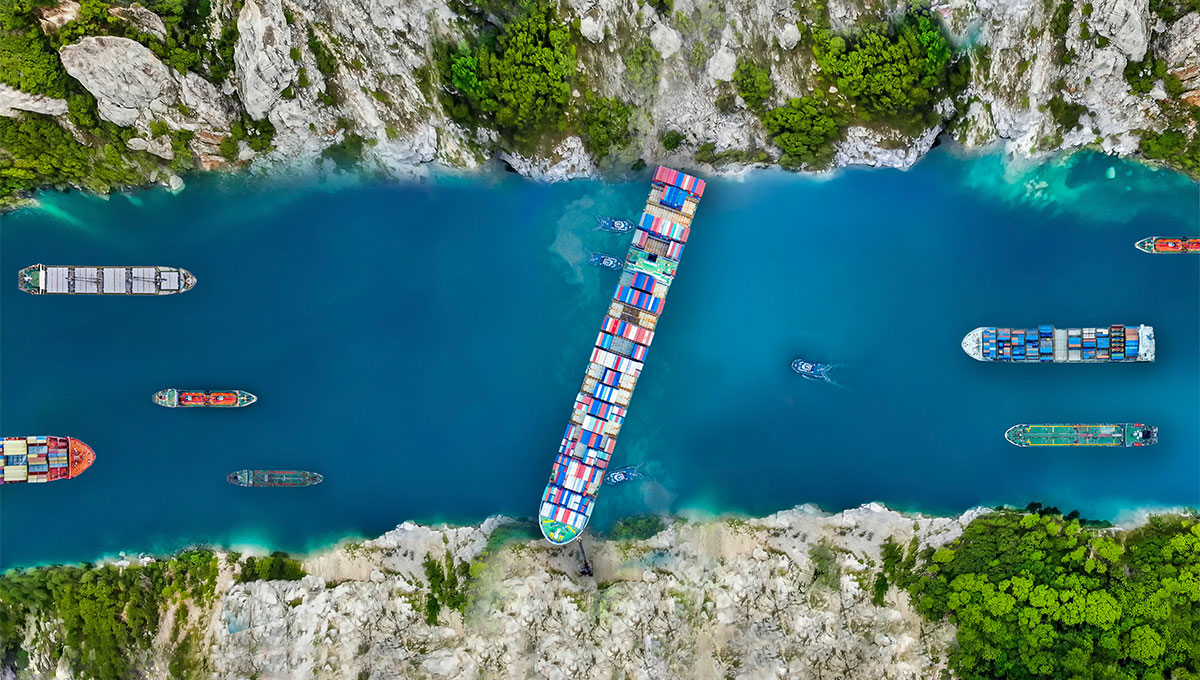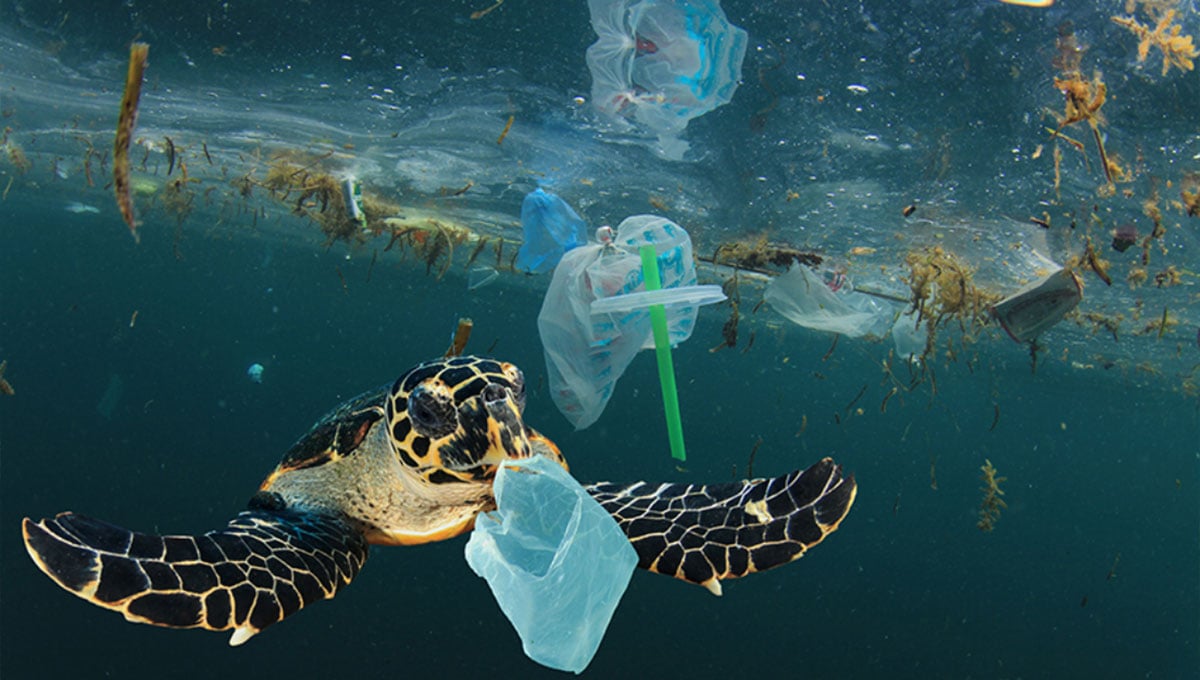Global Challenges Need 21st century Risk-based Thinking
With global issues quickly multiplying, old corporate mindsets and ways of working are proving to be a destructive force that cripple societal progress and impact business. Here’s how risk-based thinking can be a positive force for society and work to your business advantage at the same time.

"May you live in interesting times." This infamous aphorism has been described as a blessing and a curse, but there's no denying that we are certainly facing not just interesting times, but a crucial point in history.
Consider just a few recent events: last year a climate model by the World Bank predicted that by 2050, 216 million people will be forced to flee their country due to the climate crisis. In 2013, the first lab-grown burger cost US$280,000. Today it competes with big brand fast food on price — as it must if we're going to address the carbon footprint of the meat industry.
US$280,000
The cost of the first lab-grown burger in 2013

Bettering society and improving business are not mutually exclusive. But we have to ask ourselves: are we predicting and managing unforeseen risks and opportunities such as these? Do we adequately understand and mitigate existential threats? How do we build a better world where we don't just survive, we thrive?
The point is that change is happening fast, and cataclysmic events are far from rare. Exciting but unpredictable new technologies and accelerated climate change are throttling the engine for both opportunities and challenges. With volatility having such deep and lasting effects on society, the business world cannot be in the backseat. We urgently need to drive positive change, not simply react to it (or worse, ignore it.)
This is the 21st century inflection point, a time when choices that governments and business make have monumental knock-on effects. So it's high time to ask ourselves: how should we think about these challenges and what is a pragmatic way of working in this new world?
Key new approaches for a new world
Don't be so focused on the present that you ignore the future
Short-term thinking is a luxury that we can no longer afford. Organisations of all sizes and sectors need to act quickly to survive, power productivity and protect the planet.
We understand that continuity makes business leaders feel safe; they became successful by doing things a certain way, so they feel confident maintaining the status quo. But these days, this can be dangerous. The phrase business-as-usual should no longer be a comfort, but a sign of alarming carelessness.
Take just-in-time manufacturing. Producing stock to meet demand has saved companies mountains of money, raised prices and helped make the global supply chain into the behemoth we know it to be. Efficiencies were being found everywhere. "Lean" became synonymous with successful.
And then COVID hit. Supply chains rasped to a halt. Business interruptions mushroomed. But it hasn't been just COVID causing supply chain interruptions. Subsequently, in early 2021, a stranded container ship shut down the Suez Canal, holding up some US$9.6 billion dollars of goods each day. Recently, the blockages caused by anti-vaccine requirement protests in Canada cost the global automotive industry US$300 million. In this particular moment, just-in-time manufacturing is now more of a curse than a blessing.
Those who addressed their risks by changing course have avoided these headaches. Kellogg's, for example, gained market share by addressing their supply chain issues quickly. During COVID, their demand came not from schools and restaurants who buy in bulk, but individual consumers at home. Their need for more packaging exploded. In Korea, their shipment of paperboard was severely delayed, so they scoured their region for new suppliers, finding one in New Zealand. They then took broader action, diversifying their supply chain and sourcing locally to a much higher degree. As a bonus, this evolution has even deflated their carbon footprint and lowered transport costs.
You too can prepare for the chaos of the future now. But resilience does not bloom out of nowhere. It is earned. The ability to problem-solve is what creates your resilience. By understanding the risks that your company faces — from input to output, from without and within — you can mitigate risks well before they manifest. Raise your eyes from from the short- or medium-term spreadsheets; instead, look to the broader future — because it's coming faster than you think. For example, think about how climate change will affect your assets in a decade or two. Up-front preparation for different long-term scenarios will mean you don't get caught out.
Strengthen your values and purpose — and mean it
These days, many companies are focused on creating and articulating strong purpose statements. That should be applauded: in many cases it has helped to rally employees behind company strategy and improve recruitment and retention.
But if your purpose is perceived simply as a marketing ploy and not demonstrated, trust from employees and customers will erode. What's worse, an even greater threat may manifest.
Values are not just expectations, but guides for how to behave. These days, employees are faced with unknown risks, with often ambiguous or incomplete data, and looming pressure to take action quickly. If they don't feel a connection to the purpose and values of the company, they have no guide except their own guesswork or ambition.
Take this scenario: safety is a stated core value at your company. This is important, as you run a high hazard operation that uses some highly corrosive chemicals. During routine maintenance, a member of your team notices some damage on a key piece of equipment. He suspects that this could be sign of further corrosion in the piping, and potentially other equipment. Your operations director knows that she must shut down the plant. But does she shut down just long enough to replace that one piece of equipment, or for an indefinite amount of time to conduct a full inspection? How does she decide whether to prioritise production output or the integrity of the operation, and thus the lives of employees? Her choice will be dictated by the degree to which your company spotlights and stands behind its core values.

Some companies go even bigger — they make saving the world their business. At a time when we face complex global challenges, such bold moves will become ever more common.
Take Royal DSM. They began as a coal mining company and later moved into chemicals. Their acronym reflected this — Dutch State Mines — that is, until they reinvented it. They now define DSM as "Doing Something More". And that, they have. They created Brighter Living Solutions — products that boast a better environmental and social impact than mainstream products. In 2020, the products accounted for 63% of their revenue.
Then there's Ørsted. They started as a Danish state-owned oil and natural gas company, and in the early 2000s, they entered the power and electricity game, merging with five Danish energy companies They became one of the most fossil fuel intensive companies in Europe, with 85% of energy generation coming from fossil fuels, mainly coal.
And then they did an about-face. They invested heavily in renewable energy and have slashed their carbon footprint by 86% since 2006. They are now the largest offshore wind company in the world with 25% market share, and are on track to being carbon neutral in generation and operations by 2025. They've also been labeled the world's most sustainable energy company.
They are not alone. Companies like Patagonia are transforming the fashion industry, with 69% of their products composed of recycled materials. They've experienced growth of at least 10% YoY from 2016-2019 as a result. Similarly, by offering plant-based meat alternatives, Beyond Meat grew from a USD$16 million business in 2016 to a USD $406.8 million business in 2020.
Such transformation is not abrupt; it is the culmination of multiple, measured decisions that thoroughly flesh out potential opportunities and associated risks. With each step, the risk profile and risk landscape evolve. Let's take another look at Ørsted: they conducted a detailed TCFD gap analysis which, among other things, helped them to identify climate-related risks and opportunities over the short, medium and long-term, and calculate how they would impact their business. This helped them to validate the resilience of their corporate strategy. In the coming years, more companies will embrace disruptive business models that tap into the ever-growing market for sustainable products. These companies are not just experts at innovation and vision, but also masters of risk management.
| 85% | of consumers globally have become greener in their purchasing, and more than one in three are willing to pay a premium for sustainable products or services. |
Think of our global challenges as a linked ecosystem
Now more than ever, the world faces problems that can feel unwinnable. Take the pollution crisis in our waters. Eight million pieces of plastic end up in our oceans each day. Trash is so pervasive that when an explorer made the world's deepest underwater dive in 2019, he found the ocean floor, seven kilometres beneath the water, covered in plastic waste.
But even the most intimidating of problems can be solved. From breeding plastic-eating bacteria to trawler ships that scoop up nine tonnes of waste at a time, innovators are tackling the trash problem. Each solution addresses the same problem from a different angle, and thus holistically.
Elsewhere, inaction within major economies and stalled climate change talks has made the goal of climate neutrality seem impossible. But now a new sense of hope is emerging, especially in the private sector. ESG and sustainability are now major factors in investment decisions. Industries like mining are rapidly divesting from coal, and shifting focus to minerals that power the batteries and solar panels so critical to the energy transition. New technologies and the application of circularity principles allow companies to axe waste from their operations. Green hydrogen is on the horizon.
There's still work to be done, but when considered alongside other positive developments, like shifting consumer behaviour — one in three are willing to pay a premium for sustainable products or services — it appears that the tides are changing.
So what does this mean for you and your company? Expand your thinking: zoom out to understand how you can contribute to addressing societal challenges, and zoom in to identify specific sustainability risks and opportunity in your operations that could affect the system. Doing so will allow you to improve your positive impact on society in a more rounded manner. Bring your risk experts into the discussion — holistic thinking is their specialty, after all.
A new mindset for a new century: get close to risk
21st century risk-based thinking should be a north star for every organisation. To make that happen, you have to learn to look deep into potential risks now, not shunt them aside because they’re uncomfortable. So put your challenges under a microscope. It is only by urgently asking ourselves “how can we transform our values and ways of working for these unusual times?” that today’s issues can really be solved. And it’s only with everyone pitching in — companies, NGOs, communities, and individuals — to solve those challenges that we can craft the 21st century we all want: one that is more equitable, safer and greener for all.
dss+: our 21st century mindset
How we’re evolving to help our clients address and overcome their challenges.
A clear but ambitious goal:
As an operations management consultancy, our purpose feels monumental — and deliberately so: dss+ exists to save lives and create a more sustainable future. It’s a lofty goal, but it spurs us on. Because of it, we are driven to maximise both results for our clients, and positive impacts for people and the planet.
A deeply entrenched shared mindset:
Our mission — to help organisations protect what they care for; and transform through innovation that can sustain in the long-term while benefitting the planet — is a lens that steers all our decisions, big and small.
People-powered:
We put people at the centre of what we do, so diverse stakeholders can work together. Our consultants are in the boardroom and on the ground, developing and implementing solutions together with clients.